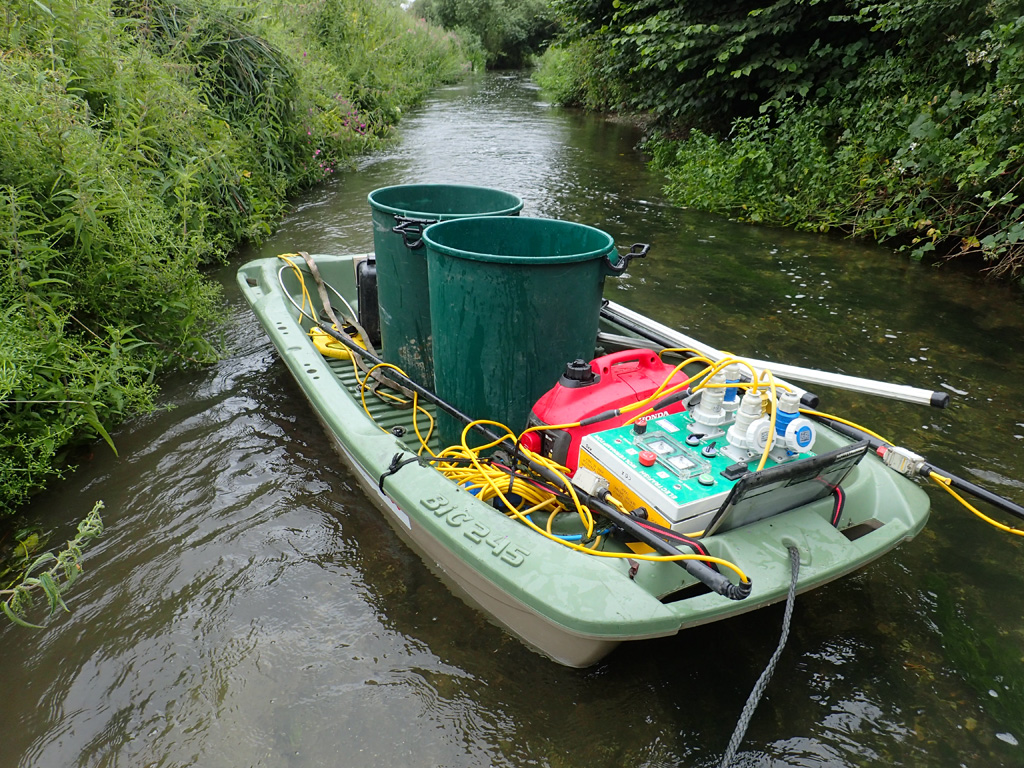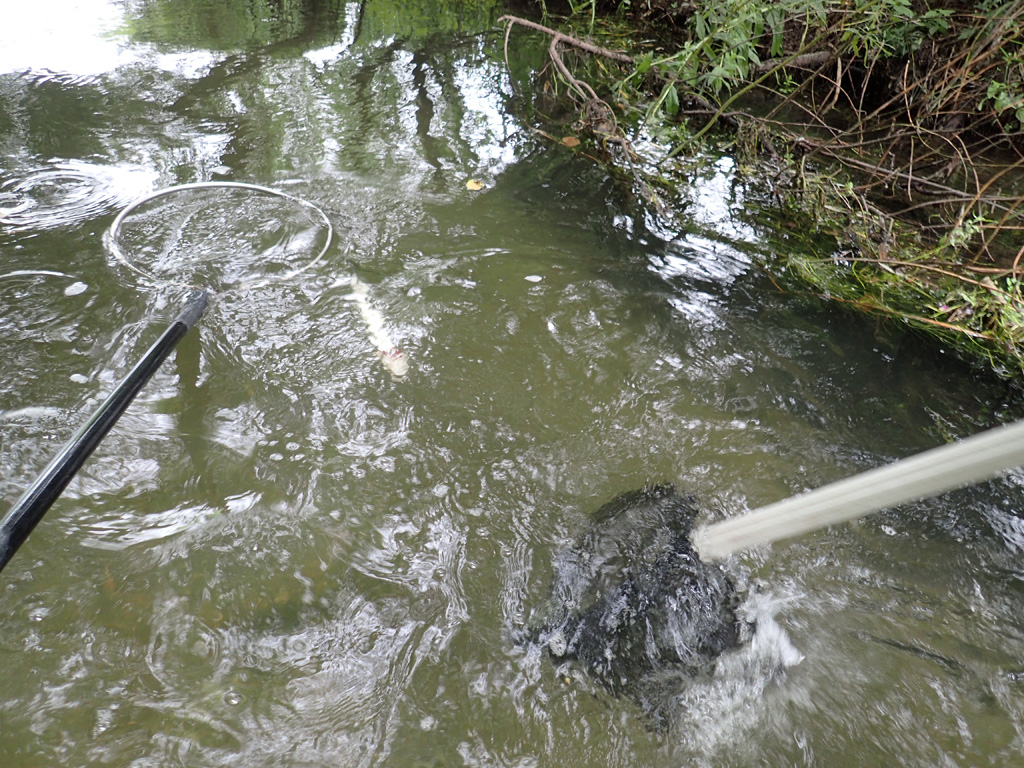Electric fishing also know as ‘electro-fishing’ creates an electric field in the water which affects the muscles and nervous system. Fish within the electric field respond with different levels of forced swimming and/or immobilisation, thus disorientating them and allowing them to be captured in dip nets.
Factors such as water conductivity, flows, fish size and fish orientation all affect the behaviour of the fish to the electric field and therefore the electric fishing efficiency. The power sources for electric fishing are usually a specially converted portable 240 volt generator, or a 12/24v battery supply, which is connected to a control box to which are connected both positive and negative electrodes to complete the electric circuit. Most electric fishing in the UK uses direct current (DC) or Pulsed Direct Current (PDC) equipment, where the positive electrode is hand-held and known as the anode, the negative electrode is called the cathode and is usually a stainless steel or braided copper strip.
The way the fish react to the electrical field depends on both the current type and settings and the fish’s orientation in relation to the anode. Fish are removed from the electric field as quickly as possible using dip nets, and transferred to a recovery container or tank.
Electric fishing surveys are a scientifically accepted method of collecting information on fish populations and fish communities and, although potentially damaging to fish and the aquatic environment if carried out incorrectly, when used by trained, competent persons in line with accepted practices, it is a safe and extremely valuable fishery management tool which can provide high quality data.
RAS’ aim is to minimise any detrimental effect by not undertaking electric fishing operations during unfavourable water quality conditions, such as salmonid sections when the water temperature exceeds 18oC, on fish welfare grounds, or when fish are stressed eg. spawning times. The exception to this rule would be fish rescues, where the fish would perish if not removed as quickly as possible.
Environment Agency consent is required to carry out electric fishing operations in England and Wales.
We hope you found our quick guide as to how electro-fishing works useful, for further information please get in touch.


